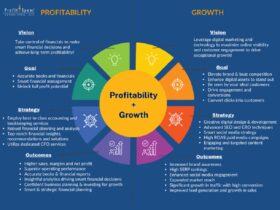There is a major effort underway to create more eco-friendly buildings. The goal is to lower energy and water consumption. This is not to mention reducing waste production as well. These buildings also use materials that have a low environmental impact. Sustainable building design requires a collaboration between architects, builders, and manufacturers. Manufacturing partners are those companies that make building materials. Think things like insulation, windows, and roofing.
EPS Manufacturers Develop Advanced Insulation
One manufacturing partner that plays a big role is companies that make insulation from expanded polystyrene (EPS). Insulation is a major focus area because heating and cooling buildings takes a lot of energy. EPS manufacturers like Epsilyte have come up with new kinds of insulation that slow heat loss in winter and heat gain in summer much better than old options. This advanced insulation means HVAC systems do not have to work as hard. Some EPS insulation even reflects heat so well that buildings stay comfortable with smaller, more efficient HVAC equipment. By improving insulation, EPS companies enable greener building design.
Window Makers Enhance Daylight and Conservation
Another vital area is windows. Windows impact energy use in a couple of ways. Natural daylight reduces our reliance on indoor lighting. To that end, window makers have engineered skylights, custom glass walls, and expansive window arrangements that maximize free daylight. Second, the right windows conserve heating and cooling when closed. Many window manufacturers now offer triple-glazed window units with protective coatings that insulate almost as well as a wall when shut. Windows also ventilate buildings without AC when opened. Innovative windows are a simple way manufacturing partners facilitate green construction.
Rooftop Solutions Generate Clean Energy
In addition to conservation measures, manufacturing partners also enable buildings to produce their own clean energy. Many building product companies now offer rooftop solar setups. The photovoltaic cells convert sunlight into electricity that serves a structure’s lighting, electronics, appliances and more. Excess power gets fed back into the utility grid. Roofing material makers even have attractive solar shingles that resemble traditional composition roofing. Rainwater collection systems are another green rooftop solution manufacturing partners offer the building industry. Captured water stores onsite in tanks and gets reused for flushing toilets, watering plants and supplementing sprinkler reserves.
Responsive Partner Networks Share Expertise
An important way manufacturing partners advance sustainable construction is knowledge sharing between architects, builders, and product suppliers. The ability for architects to quickly find solutions to problems when designing green buildings is facilitated by websites that connect them to a responsive network of industry partners, enabling faster responses to roadblocks. Connected experts provide guidance around the latest green materials, technology integrations, cost breakdowns, available incentives, and compliance issues. Tight collaboration circles speed up learning curves for architects navigating their first few sustainable builds. Partner networks drive manufacturers to continuously update and enhance their product lines by responding to market trends and customer input.
Conclusion
Constructing modern buildings that conserve resources takes input from many manufacturing partners, making products better tailored to green objectives. EPS insulation providers develop advanced barriers to heat flow, enabling HVAC downsizing. Window makers add daylight access, ventilation possibilities and sealed-unit insulation against outdoor temperatures when closed. Roofing companies integrate solar systems for generating onsite renewable power. Connected partner ecosystems share practical implementation lessons around building sustainably. Though architects steer blueprints, it is input from engaged manufacturing partners that transforms plans into tangible structures matching the environmental aspirations of a final design. By listening closely to the needs of the building sector, manufacturers equip it with the right tools to send construction in greener directions.












